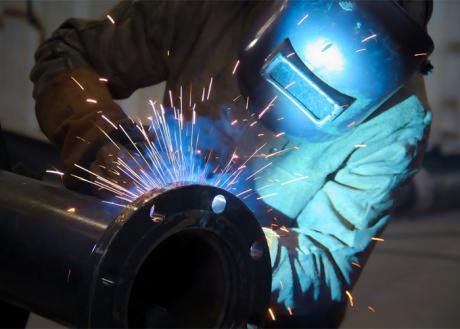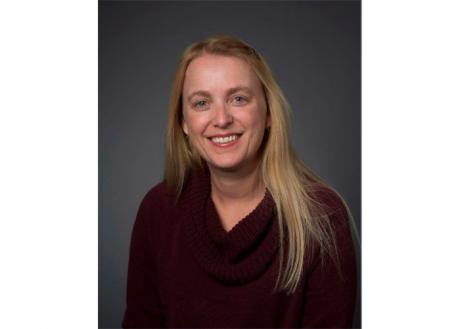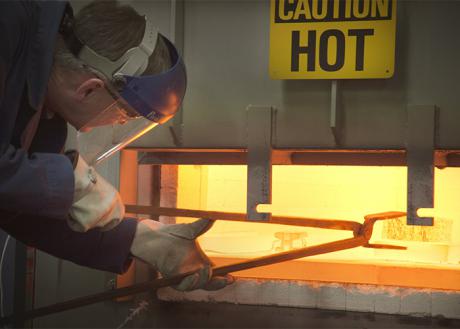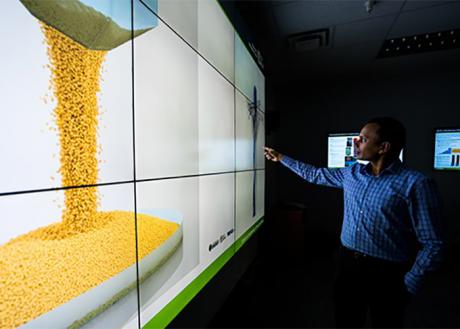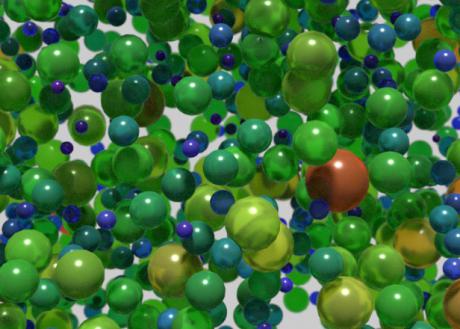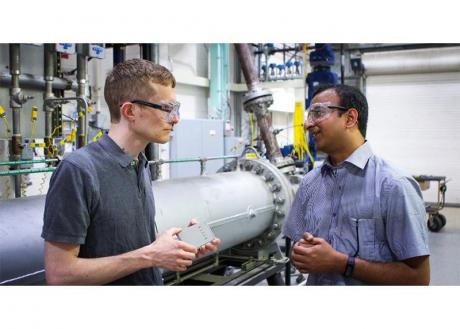NETL and the Appalachian Regional Commission (ARC) have announced five finalists for the Advanced Welding Workforce Initiative (AWWI), a partnership to invest approximately $1 million in education and training for advanced technical workers in Appalachia.
The U.S. Department of Energy (DOE) Office of Fossil Energy High Performance Materials Program provided $750,000 to AWWI to prepare a new generation of welders to manufacture and service high-temperature alloy components in advanced coal- and natural gas-fueled electric generating stations. Such plants operate at significantly higher temperatures and pressures, which increases efficiency and lowers emissions of carbon dioxide and requires the use of superalloys that can withstand the harsh conditions.
Skills to be acquired through AWWI training will also be broadly applicable for positions in Appalachia’s emerging aerospace, aviation, automotive and petrochemical industries, which will require welders and other technicians with expertise in working with high-performance materials.
About
News and Events
Research and Programs
Featured Initiatives Advanced Alloys Signature Center (AASC) Center for Fuels and Chemicals (CFC) Center for Microwave Chemistry (CMC) Coal for High-Value Products Critical Minerals and Materials Natural Gas Science-based Artificial Intelligence and Machine Learning Institute (SAMI) Subsurface Science Turbine System Optimization
Major Fossil Energy Programs Carbon Management Resource Sustainability
Core Competencies Computational Science and Engineering Energy Conversion Engineering Geological and Environmental Systems Materials Engineering and Manufacturing Strategic Systems Analysis and Engineering Program Execution and Integration
Core Competencies Computational Science and Engineering Energy Conversion Engineering Geological and Environmental Systems Materials Engineering and Manufacturing Strategic Systems Analysis and Engineering Program Execution and Integration
Energy Technology Development Office of Energy Efficiency and Renewable Energy Battery Workforce Initiative Cybersecurity, Energy Security, and Emergency Response Office of Electricity
University Training & Research Historically Black Colleges and Universities and Minority Serving Institutions Program University Carbon Research Program
University Training & Research Historically Black Colleges and Universities and Minority Serving Institutions Program University Carbon Research Program
Business
Library
Explore our Library

Approved Categorical Exclusions Environmental Assessments Environmental Impact Statements Oil and Gas Projects Summaries NETL Fact Sheets Publication Search Energy Data Exchange (EDX) FECM External R&D Final Technical Reports Project Landing Page Summary Information for External R&D Awards NETL R&D Publication Search Peer Review Reports
- Research and Programs
- Featured Initiatives
- Core Competencies
- Core Competencies
- Energy Technology Development
- University Training & Research
-
- Business
- Technology Transfer
-
- Library
- Energy Analysis
-
- About
- News and Events
- Education



